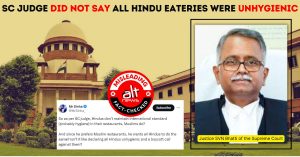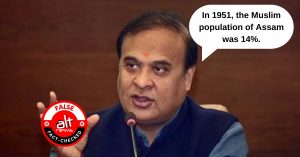Prime Minister Narendra Modi was at Maghar in Uttar Pradesh on June 28 to pay homage to Kabir on his death anniversary. Maghar is the place where Kabir breathed his last. The poet and mystic, along with Nanak, Namdev, Chaitanya and Jnanesvara among others represented a stream of practice and thought popularly known as the Bhakti movement, which spanned medieval India and stressed on devotion, tolerance, harmony and fraternal love.
In his address, the Prime Minister extolled the greatness of Kabir and said,“I once again salute Mahatma Kabir in this land of nirvana. It is said that Sant Kabir, Guru Nanak Dev and Baba Goraknath sat together at this place and discussed spirituality” (translated).”
PM Modi referred to three famous persons of the medieval era- Kabir, Nanak and Gorakhnath. He also stated that the three were contemporaneous- assembling at Maghar to discuss spiritual matters. A close look at the history of medieval India, however, belies this claim. Let us look at each of these names and the years in which they are believed to have lived.
Kabir
Kabir, mystic saint and poet whose dohas are recited to this day, has been placed by most historians in the 15th century CE although the dates are not conclusive. Kabir was part of a tradition within the Bhakti movement known as nirguna (without attributes, boundless divine consciousness).
David Lorenzen, author and scholar of South Asian history in his paper Who Invented Hinduism states that Kabir lived through the 15th century. He writes, “Kabir lived in Banaras between about 1450 and 1520 A.D., and is said to have been raised in a Muslim family before becoming a follower of the Vaishnava guru Ramananda.” Linda Hess, author and scholar on Kabir concurs, placing Kabir between 1398-1518 CE.
Nanak
Guru Nanak, the founder of Sikhism and another famous proponent of nirguna bhakti belongs to the 15th and 16th centuries. Guru Nanak was born in 1469 CE at present day Nankana Sahib near Lahore. He is said to have lived till 1539 CE.
PM Modi is correct to the extent that both Kabir and Nanak were contemporaries. There are also many similarities in their teachings, and both poet-saints are said to have inspired and influenced each other. But what about Gorakhnath?
Gorakhnath
Gorakhnath is considered to be the founder of the nath movement, which is a Shaivite yogic tradition. He is credited with setting up the monastic order of the movement. According to numerous scholars, Gorakhnath lived in the 12th century CE, the period when the nath movement flourished.
Gorakhnath and the Kanphata Yogis by George Weston Briggs which is considered among the most authoritative texts of the nath panthi movement states, “There is thus found in the Jnaneswari a literary reference to Gorakhnath, which gives him a definite place in history. If the usual date 1290, for the Jnaneswari be accepted, Gorakhnath may be placed not later than 1225. There is, however, some uncertainty concerning the date of this work.
While it may be said that the poem was written not later than 1290, it may have been written earlier.” Jnanesvari is a commentary on the Bhagvad Gita which was written by Jnaneshvara (or Dnyaneshvara), Marathi poet-saint in the 13th century CE. This is corroborated by Indologist and scholar Dr. James Mallinson who writes in Nath Sampradaya that Gorakhnath lived in the 12th century CE.
| Gorakhnath | circa 12th century CE |
| Kabir | 15th century CE (circa 1398-1518) |
| Nanak | 15th century CE (1469-1539) |
Are there references to Kabir, Nanak and Gorakhnath in conversation?
There are two references to conversations or dialogues which supposedly took place between Kabir, Nanak and Gorakhnath. In the Janam Sakhi of Guru Nanak, the founder of Sikhism is represented as talking to Gorakhnath and Matsyendranath, the founder of Hath Yoga. Gorakhnath ki gosthi on the other hand speaks of a conversation between Gorakhnath and Kabir. However, scrutiny of the verses have led scholars to conclude that references to these dialogues are allegorical, and that Gorakhnath was born much earlier than Kabir and Nanak.
Depending on the context, PM Modi laces his oratory with historical references, but he has been caught on the wrong foot on earlier occasions too. In May 2018, he had wrongly claimed that no Congress leader had visited Bhagat Singh when the latter was imprisoned by the British. It is true that both Nanak and Kabir were inspired by the teachings of Gorakhnath which manifests in their devotional hymns. It is also true that legends speak of dialogues between them, but legends are not fact. The weight of scholarly opinion definitively places Gorakhnath at least three centuries apart from Nanak and Kabir.
Independent journalism that speaks truth to power and is free of corporate and political control is possible only when people start contributing towards the same. Please consider donating towards this endeavour to fight fake news and misinformation.




